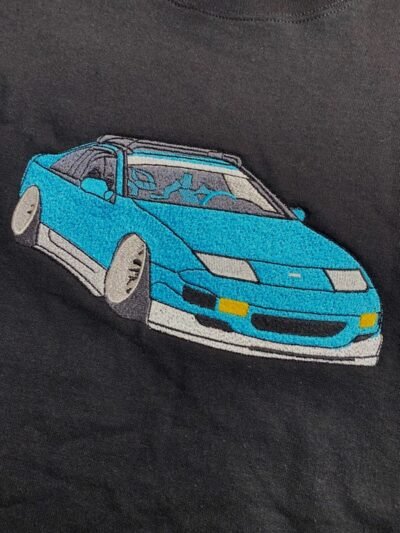Digital embroidery is a modern technique that combines traditional embroidery methods with advanced computer technology. This technique allows for precise and intricate designs to be created and replicated on fabric with ease and efficiency. Here are some key aspects of digital embroidery:
How Digital Embroidery Works
- Design Creation: The process starts with creating a digital design using specialized embroidery software. These programs offer a variety of tools to create complex patterns, adjust stitch types, and fine-tune the details of the design.
- Digitizing: This step involves converting the artwork into a digital file format that an embroidery machine can read. The design is broken down into individual stitches, and the software maps out the path the needle will take to create the design.
- Machine Setup: The digital file is transferred to an embroidery machine. The fabric is hooped and secured in place to ensure stability during the stitching process.
- Embroidery Process: The machine uses the digital file to guide its movements, stitching the design onto the fabric. Modern machines can have multiple needles, allowing for the use of various thread colors without manual intervention.
- Finishing Touches: Once the embroidery is complete, the fabric is removed from the hoop, and any excess stabilizer or threads are trimmed.
Benefits of Digital Embroidery
- Precision and Consistency: Digital embroidery ensures high precision and consistency in the final product. Each piece produced is identical, which is crucial for branding and professional applications.
- Efficiency: The automation of the embroidery process significantly reduces production time and labor costs. Once a design is digitized, it can be reproduced quickly and efficiently.
- Complex Designs: Digital embroidery allows for highly intricate and detailed designs that would be difficult or impossible to achieve by hand.
- Customization: It offers the flexibility to easily modify designs and create custom pieces, making it popular for personalized items, such as monogrammed towels, custom patches, and branded apparel.
Applications of Digital Embroidery
- Fashion and Apparel: Digital embroidery is widely used in the fashion industry for embellishing clothing, accessories, and home décor items.
- Corporate Branding: Companies often use digital embroidery to create branded uniforms, promotional items, and corporate gifts.
- Sportswear: Team logos and player names are commonly embroidered on sports uniforms and gear.
- Home Décor: Items like curtains, pillows, and table linens are often enhanced with embroidered designs.
- Custom Gifts: Personalized gifts, such as embroidered towels, robes, and bags, are popular for weddings, birthdays, and other special occasions.
Advances in Digital Embroidery
The field of digital embroidery continues to evolve with advancements in technology. Some of the latest trends and innovations include:
- 3D Embroidery: Techniques that create a raised, textured effect, adding depth to the designs.
- Mixed Media: Combining embroidery with other techniques, such as printing or appliqué, to create unique and dynamic designs.
- Eco-friendly Materials: The use of sustainable and eco-friendly threads and fabrics is becoming more prevalent, aligning with the global trend towards sustainability.
- Smart Embroidery Machines: Modern machines come with features like touch screens, wireless connectivity, and automatic thread cutting, making the process more user-friendly and efficient.
Digital embroidery bridges the gap between traditional craftsmanship and modern technology, offering endless possibilities for creativity and innovation in textile design.





